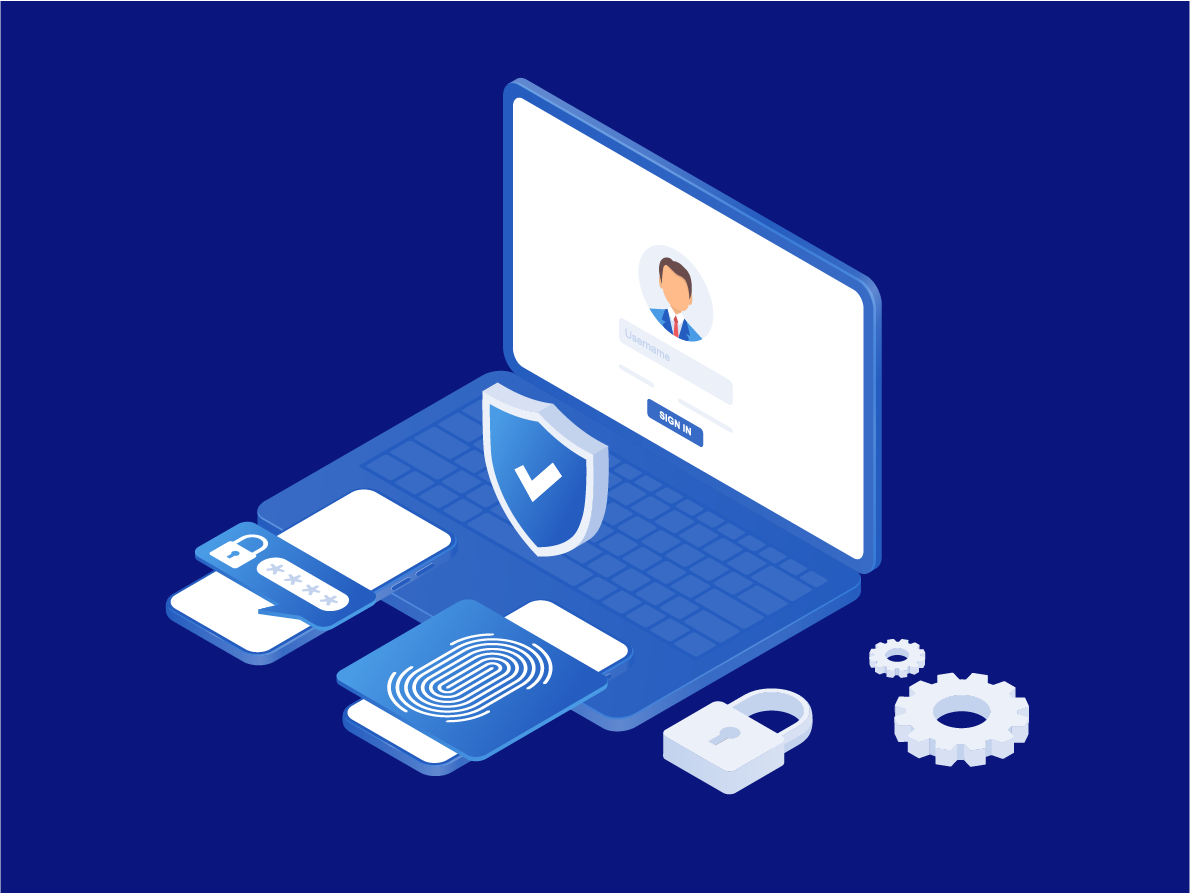
Get started with FIDO2 biometric authentication for free HERE
E-commerce is a rapidly growing and evolving sector. Various factors, like rising internet penetration and mobile use, are driving the accessibility of online stores. New software solutions also allow small and medium businesses to set up their digital presence easily. These combined capabilities promote the expansion of e-commerce activities.
The COVID-19 situation only amplified the need for remote transactions, encouraging more companies to shift to online channels. However, these developments also make the sector a more attractive target for cybercriminals.
Fraud is one of the biggest problems e-commerce enterprises face. According to Statistica, e-commerce losses due to online payment fraud were estimated at $20 billion in 2021. This figure is 14% higher than the $17.5 billion of the previous year. A global survey also revealed that 75% of organizations reported an increase in fraud attempts since the beginning of the Covid pandemic.
Fraudsters attack online merchants through various schemes. The sector's most prevalent fraud types are friendly fraud, card testing, and phishing.
- Friendly fraud is where the customer makes a credit or debit card purchase and disputes the charge with the bank without a legitimate reason. A 2021 Digital Trust & Safety Index report by Sift revealed that there was a 19% increase in chargeback cases from the first quarter of 2020 to the fourth quarter of 2021. 17% of the consumers filing disputes admitted to committing friendly fraud.
- Card testing happens when someone with stolen credit or debit card credentials uses tools to cheat a card-not-present (CNP) transaction authentication in an online store. Key indicators of this type of fraud include an unusually high volume of card authorization for low-cost purchases in rapid succession.
- Phishing tricks victims into believing that a message they receive is something that they need and can trust. Usually, the attackers disguise themselves as legitimate companies and lure platform users into revealing their credentials. Once they have the ill-gotten credentials, attackers can use them to make fraudulent transactions. SOCRadar detected over ten thousand phishing domains imitating e-commerce sites in 2021.
E-commerce companies spend another $3.36 for every dollar lost to fraud. This cost covers the interest, fees, and merchandise replacement expenses relating to the fraudulent transaction. Successful fraud attempts against small retailers are at 27%, and 43% to 48% for mid and large companies.
With the rising number of fraud attacks, online merchants often struggle to distinguish legitimate customers from malicious bots. Transactions involving third-party, non-bank payment providers are even more complicated to verify. E-commerce enterprises need a multi-layered strategy to protect their business and users from fraud risks.
Detecting and preventing fraud could mean the difference between a profitable and a failing business. Although implementing and investing in real time fraud prevention systems and security has traditionally entailed considerable costs, however, LoginID’s biometric authentication solution is easy to integrate and can also save the company money in the long run.
Real time fraud prevention strategies are important to avoid losing money from cyberattacks. For example, the business loses money from inventory, shipping, operational costs, and chargeback fees in chargeback fraud. When there are controls that secure vulnerable access points, it is much harder for fraudsters to execute their schemes, and the company avoids these costs.
Additionally, e-commerce enterprises rely on trust to function. With minimal person-to-person interactions, customers need to trust the online store so they can confidently transact with them. The organization can establish this with transparency and a good reputation.
Fraud attacks can severely damage an organization's credibility. Consumers would not want to engage with an enterprise that will expose them to high risks. An e-commerce real time fraud prevention system gives customers peace of mind that their data and funds are safe from malicious individuals.
The company also needs to determine whether its users are legitimate. If a purchase transaction is genuinely fraudulent, the real account owner can file for a valid chargeback request. In these cases, it is usually the business that is at a disadvantage. Businesses need to be able to distinguish fraudsters from real customers and stop them from making illegitimate transactions.
Real time fraud prevention measures like payment authentication can address this concern. Payment verification is the process of confirming that the purchaser is the account's actual owner. Merchants, banks, card issuers, and payment processors typically use a combination of factors for more reliability. LoginID’s e-commerce solution accomplishes this by offering payment authentication with biometric digital signature functionality that creates a digital receipt for every transaction.
The Revised Payment Service Directive (PSD2) introduces strong customer authentication. It requires e-commerce companies to use two or more of the following factors: knowledge, inherence, and possession. This entails using one-time passwords (OTPs), biometric authentication, tokens, and security questions. To apply PSD2 strong customer authentication, companies implement 3D secure payments and or FIDO2 protocols.
LoginID Authentication Solution for E-commerce Platforms
Modern payment verification solutions offer e-commerce entities several advantages. Tools like LoginID’s passwordless authentication UX reduce the friction in the account registration and authentication processes, so it optimizes the user experience.
Instead of requiring easy-to-forget and hackable passwords, LoginID offers FIDO2 biometric authentication APIs that utilize the biometrics native to the user’s device. At checkout, the customer simply scans their face or swipes their fingerprint to biometrically sign the transaction (also called a biometric digital signature) and thus ensuring secure payment authentication. This generates an irrefutable digital receipt proving the purchaser is in fact who they say they are, protecting both the consumer and business from fraudulent activity.
Additionally, implementing strong payment authentication helps e-commerce companies avoid chargeback costs. If the customer's card issuer is enrolled in a 3D Secure program and they have confirmed the user's identity, the liability for fraud-related chargebacks on that payment transaction shifts from the merchant to the issuer.
LoginID's FIDO2 biometric authentication also reduces the vulnerabilities of traditional payment verification methods. It shifts away from passwords that hackers can steal through phishing and keylogging attacks. LoginID's strong customer authentication solutions also works for both web and mobile e-commerce transactions. Therefore, it offers customers convenience and flexibility. It is easy to integrate without compromising security and regulatory compliance.
Get started by getting in touch with our experts today at sales@loginid.io. You may also:
- register an account to get immediate access to LoginID's passwordless authentication solution
- check out our tutorial
- read our documentation
References:https://www.fisglobal.com/en/insights/merchant-solutions-worldpay/article/3d-secure-2-five-benefits-of-cardholder-authenticationhttps://usa.visa.com/visa-everywhere/security/preventing-fraud-with-digital-authentication.htmlhttps://media.fidoalliance.org/wp-content/uploads/2019/01/How_FIDO_Meets_the_RTS_Requirements_December2018.pdf


